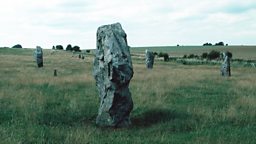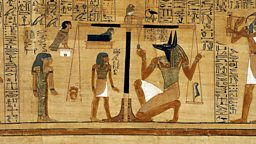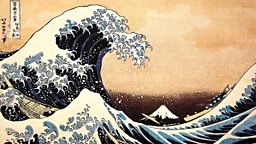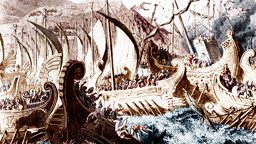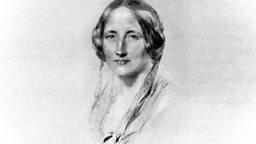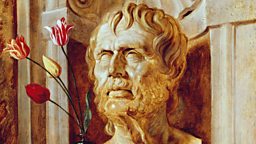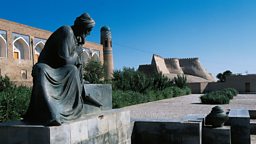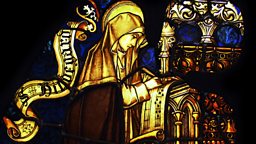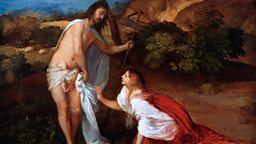Nine things you might not know about the Sistine Chapel
Michelangelo's astonishing frescoes in the Sistine Chapel are a masterpiece of Renaissance art.
In Radio 4's In Our Time, Melvyn Bragg discusses Michelangelo’s iconic work with Prof Catherine Fletcher from Manchester Metropolitan University, Sarah Vowles from the British Museum and Matthias Wivel from the National Gallery.
1. Michelangelo was still a toddler when the Sistine Chapel was commissioned
Michelangelo was just five years old in 1480 when Pope Sixtus IV commissioned the building of the Sistine Chapel. The chapel was part of a glorification of the Vatican carried out by Sixtus. He intended the holy city to become a showcase for the popes returning from Avignon after a painful schism with Rome.

2. Visitors enter the chapel the wrong way
Tourists visiting the chapel don’t get long to wonder at the wall where The Last Judgement is painted or at the ceiling frescoes depicting the nine scenes from the Book of Genesis, which, as Sarah Vowles says, “root you to the spot”.
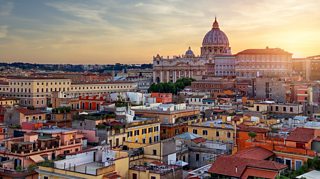
Meanwhile, the order in which tourists are awed is not quite as it should be. “When you go around the Vatican as a tourist, you are actually brought into the wrong end of the Sistine Chapel,” says Vowles. “You emerge through this tiny doorway at the side of the altar, which actually brings you into the area that would have been reserved for the clergy.”
3. The Sistine Chapel is actually quite small
Given the spectacle on offer and its religious, spiritual and historical significance, the actual size of the chapel might be a surprise to the first-time visitor. “It's only 134 feet long, 44 feet wide and 68 feet high, quite a small space,” says Sarah Vowles, “especially when you think there's 12,000 square feet of painted surface in that chapel.”
4. Michelangelo was a sculptor who was pressured to paint
Michelangelo served as an apprentice to fresco painter Domenico Ghirlandaio but had started as a sculptor and came to prominence with his iconic carving of the Biblical figure of David, completed in 1504. A year later he was in Rome, commissioned by Pope Julius II to work on his tomb in the new basilica of St Peter’s. “For reasons we don’t know exactly,” explains Matthias Wivel, “he was diverted to painting the ceiling.” Some in the artist community were circumspect, including Donato Bramante, the architect of St Peter’s, who warned against employing him.
5. Michelangelo did almost all of the painting in the Sistine Chapel
Notwithstanding Michelangelo’s ability to feed his own hype, Matthias Wivel says that restoration work has proved that the work on the Sistine Chapel was “largely done by one hand, except for relatively minor parts done by assistants”.
“Towards the end,” says Wivel, “he was working from drawings, from sketches and drawings directly on to the plaster, which is quite remarkable and possibly unprecedented.”
6. The chapel鈥檚 theme would have had a lot of input!
Prof Catherine Fletcher describes the timeline of the Sistine Chapel – from the election of Pope Sixtus IV in 1471 to Michelangelo returning to paint The Last Judgement between 1535-1541 – as “70 years of multiple people of multiple different generations, cumulatively adding their interventions”.
“We know the ceiling started out blue with gold stars, and later on there was a change,” Catherine says. “We know that originally there was something entirely different on the wall where The Last Judgement ended up. They changed their minds as they went on over the course of these two, almost three generations.” However, she adds: “It's a logical sequence that they add to.”
7. The “iconic” image of God creating Adam also features a woman, thought to be Eve
The chapel’s central, ceiling image of God creating Adam, with their fingers almost touching, is one of the most arresting in the whole building. Prof Catherine Fletcher calls it “one of the handful of paintings that you see absolutely everywhere. It stands alongside the Mona Lisa as possibly the only other painting from Western art that has quite that iconic level.”
Among the figures gathered within God’s cloak in the picture is a woman, often thought to be Eve before she was created. “She’s still in God’s repertoire behind him,” says Matthias Wivel. “And she looks extremely aware of what’s happening. God is giving Adam a soul, giving him free will and that’s what she [Eve] personifies.”
8. The Last Judgement fresco was censored
The Last Judgement was painted 25 years after the Sistine Chapel ceiling, by which time Michelangelo was 60. A sense of his own mortality creeps into the work, which is, as Sarah Vowles describes, “an entire wall full of blue and tumbling, twisting, falling bodies”, a stark contrast with the orderly ceiling fresco.
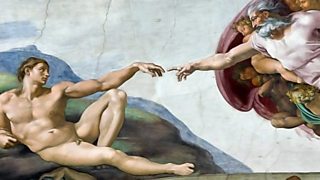
The altar wall remains shocking today
The tumbling bodies are mostly male and mostly naked – the Pope’s officer Biagio da Cesena complained about the nudity. Michelangelo’s response was to immortalise da Cesena in the painting as the judge of the damned and of hell, naked save for a snake wrapped around his hips and genitals, which the snake is biting!
Criticism of the nudity continued even after Michelangelo died. His former assistant, Daniele de Volterra, was asked to paint trousers on the naked figures, earning him the nickname of “breeches-maker”. The spirit of the painting endured, however, with even the Spanish Inquisition defending Michelangelo’s use of nudity at the trial they held over Veronese’s Last Supper.
9. Michelangelo remains an icon thanks to the Sistine Chapel
Unlike many artists, with the Sistine Chapel (and David, of course), Michelangelo’s work was appreciated in its time. The endurance of The Last Judgement (censored or otherwise) is a testimony to his legacy, and the Sistine Chapel as a whole, Sarah Vowles says, was “one of the great achievements of art and widely considered to be the school for all artists to follow right from the very beginning”.
Plaudits have kept coming through the ages, with German polymath Goethe noting: “Until you have seen the Sistine Chapel, you have no adequate conception of what man is capable of accomplishing.”



